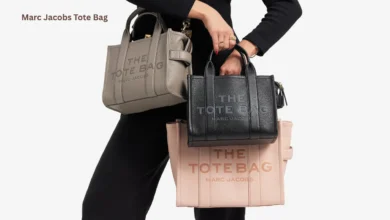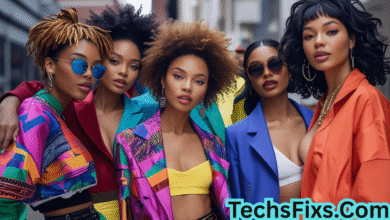Influencers gone wild In the digital age, the concept of celebrity has undergone a profound transformation. Traditional fame, once rooted in cinema, television, or sports, has made space for a new kind of stardom: the influencer. With millions of followers across platforms such as Instagram, TikTok, YouTube, and Twitter, influencers are redefining what it means to be famous. But with the rise of this phenomenon comes a darker, more chaotic side, often encapsulated by the phrase “influencers gone wild.” This term refers not just to wild behavior, but to a broader cultural trend of influencers crossing ethical, legal, or moral boundaries in pursuit of attention, engagement, or monetization.
The Evolution of Influencer Behavior
Influencers began as relatable individuals who shared fashion tips, beauty routines, travel vlogs, and fitness advice. Their charm lay in their accessibility, a direct contrast to the untouchable allure of Hollywood stars. However, as platforms grew and the competition for visibility intensified, content became more extreme. Pranks turned dangerous, opinions grew polarizing, and lifestyles became exaggerated. This shift gave birth to the notion of influencers who push the envelope too far, becoming controversial, offensive, or even criminal in their actions.
The concept of “gone wild” does not merely imply carelessness. It reflects a deliberate strategy employed by some influencers to break norms and capture Influencers gone wild attention. Shock value has become a tool for virality, with followers rewarded with outrageous stunts, heated rants, or scandalous revelations. This behavioral shift illustrates the high stakes of staying relevant in an oversaturated market.
The Psychology Behind the Chaos
Social media platforms reward engagement. The more likes, shares, and comments a post receives, the more it is promoted by the algorithm. This system incentivizes influencers to provoke reactions, even if those reactions stem from anger, disbelief, or disapproval. The feedback loop is simple: the wilder the content, the higher the engagement. Over time, influencers may become addicted to this validation, pushing themselves to create increasingly controversial material.
This phenomenon is deeply rooted in psychological principles. Dopamine, the brain’s pleasure chemical, surges when users receive likes or positive comments. For influencers, the pursuit of this rush can lead to dangerous levels of narcissism and risk-taking. Many influencers lose sight of their initial purpose, replacing authenticity with sensationalism. What starts as creative expression often spirals into attention-seeking behavior with real-world consequences.
The Role of Cancel Culture
The rise of “influencers gone wild” has coincided with the proliferation of cancel culture. This social phenomenon allows users to collectively shame or boycott public figures who engage in problematic behavior. In theory, it is a form of accountability. In practice, it can lead to swift and brutal backlash, sometimes without full context or due process.
Cancel culture has become a double-edged sword. While it has exposed genuine harm and abuse among influencers, it has also created a climate of fear and defensiveness. Many influencers walk a tightrope, attempting to remain edgy without being canceled. Ironically, some even invite controversy, believing that the resulting attention will increase their visibility, regardless of whether it is positive or negative.
The relationship between cancel culture and influencer chaos is complex. In some cases, influencers deliberately provoke outrage to stay in the headlines, knowing that even negative press can boost their brand. In others, genuine missteps are amplified and distorted beyond recognition. In either case, the dynamic reinforces the idea that wild behavior, for better or worse, keeps influencers in the spotlight.
Real-World Consequences
As influencers blur the lines between reality and performance, their actions increasingly spill into the offline world. What may begin as a viral stunt can lead to arrests, lawsuits, and bans. Cities have issued restraining orders against influencers who disrupt public spaces. Schools have dealt with the fallout of students imitating viral challenges. Brands have severed partnerships to protect their reputations. The consequences of going wild are tangible and far-reaching.
Influencer behavior can also shape societal norms. Younger audiences, in particular, are impressionable and often emulate the people they follow. When influencers promote reckless driving, substance abuse, or hate speech, they set dangerous precedents. The line between entertainment and real-life influence blurs, especially when followers view influencers as role models.
Mental health is another area impacted by the influencer culture. Many influencers experience burnout, depression, or anxiety from the constant pressure to perform. The pursuit of virality and fame can be isolating, especially when influencers feel compelled to curate a fictionalized version of their lives. On the flip side, audiences may develop unrealistic expectations based on the exaggerated personas they consume daily.
Platform Responsibility and Regulation
Social media platforms have long walked a fine line between fostering creativity and regulating harmful content. Their business models thrive on user engagement, which makes controversial content financially beneficial. However, public pressure and media scrutiny have forced companies to act. Many platforms now have community guidelines, demonetization policies, and reporting systems to combat inappropriate influencer behavior.
Despite these efforts, enforcement remains inconsistent. Some influencers face swift repercussions for violating terms of service, while others operate with impunity. This inconsistency undermines the credibility of platforms and allows harmful trends to flourish. Critics argue that tech companies must take more proactive roles in monitoring content, especially when it targets or endangers vulnerable populations.
Governments are beginning to step in as well. Countries like France and the United Kingdom have introduced legislation aimed at regulating influencers, particularly in the areas of advertising, child safety, and misinformation. These laws reflect growing recognition that influencer behavior is not merely entertainment—it has societal consequences that demand oversight.
The Cultural Impact
The phrase “influencers gone wild” has become a cultural meme, shorthand for the absurdity and unpredictability of the digital age. It is often used sarcastically to highlight ridiculous stunts or scandals. But beneath the humor lies a more serious commentary on the way society consumes fame and spectacle.
Influencer culture reflects broader societal values, particularly the obsession with visibility and the commodification of personal identity. In a world where success is measured in followers and engagement, the boundaries of self-presentation become fluid. Going wild, in this context, is not an anomaly—it is often a calculated move to stay relevant in a cutthroat digital economy.
The cultural impact also extends to traditional media. News outlets now report on influencer scandals alongside political developments and global crises. Documentaries, podcasts, and books have emerged to chronicle the rise—and fall—of influencer empires. The once-niche world of digital content creation is now a central part of the entertainment landscape.
Redemption and Reinvention
Not all stories of influencers gone wild end in disgrace. Some influencers use moments of crisis as turning points. Public apologies, therapy, and rebranding are common strategies for redemption. Influencers who acknowledge their mistakes and show genuine growth can rebuild trust and even gain a more loyal following.
The process of reinvention highlights a unique aspect of influencer culture: its inherent fluidity. Unlike traditional celebrities who rely on industry gatekeepers, influencers control their own narratives. This autonomy allows for rapid pivots and reinvention. However, it also means that accountability often depends on audience perception rather than institutional oversight.
Redemption arcs can be inspiring, but they also raise ethical questions. When influencers profit from their scandals—through increased views, merchandise, or comeback tours—it blurs the line between accountability and exploitation. The question remains: are these transformations authentic, or merely another form of performance?
The Future of Influencer Culture
As influencer culture matures, it will likely face greater scrutiny and evolving standards. Audiences are becoming more discerning, seeking authenticity over spectacle. Brands are investing in long-term partnerships rather than one-off viral moments. Regulators are developing frameworks to ensure transparency and protect consumers.
At the same time, new platforms and technologies will continue to disrupt the landscape. Virtual influencers, AI-generated content, and decentralized media networks are already reshaping how influence is created and distributed. These innovations will introduce new ethical dilemmas and opportunities, making it essential to establish norms that prioritize safety, honesty, and responsibility.
The future of influencers will not be defined by those who go wild for clicks. Instead, it will belong to those who understand the power of influence and wield it with integrity.
Conclusion
The phrase “influencers gone wild” captures the chaos and contradictions of the digital age. It reflects a world where fame is fluid, ethics are negotiable, and spectacle often trumps substance. Yet it also serves as a mirror, revealing society’s fascination with controversy and our collective complicity in rewarding extreme behavior.
As influencers continue to shape culture, it is crucial to examine not just their actions, but the systems that incentivize them. Platforms, audiences, and influencers themselves must navigate the delicate balance between entertainment and responsibility. Only then can the culture of influence evolve into something more sustainable, meaningful, and positive.
FAQs
What does the term “influencers gone wild” mean?
It refers to influencers who engage in outrageous, unethical, or controversial behavior to gain attention or maintain relevance on social media.
Why do influencers behave in extreme ways?
Many influencers pursue shocking content because it often results in higher engagement, increased visibility, and financial rewards from platform algorithms and brand partnerships.
Are there consequences for influencers who cross the line?
Yes, consequences can include public backlash, loss of sponsorships, platform bans, legal issues, and damage to their personal and professional reputations.
Can influencers recover after a public scandal?
Some do manage to rehabilitate their image through apologies, behavior change, and rebranding efforts, though public trust may take time to rebuild.
How are platforms responding to problematic influencer behavior?
Platforms are implementing stricter community guidelines Influencers gone wild demonetization policies, and user reporting tools, but enforcement can be inconsistent.
Is influencer culture changing?
Yes, audiences are demanding more authenticity and accountability. New technologies and regulations are also influencing how content is created and consumed.



